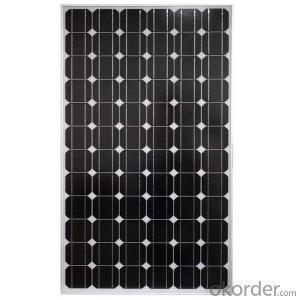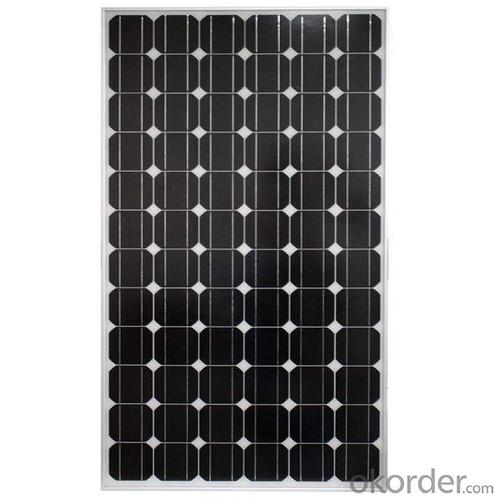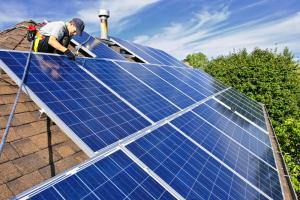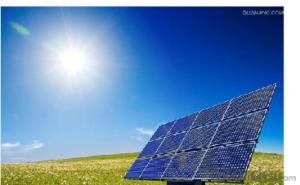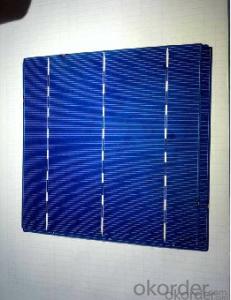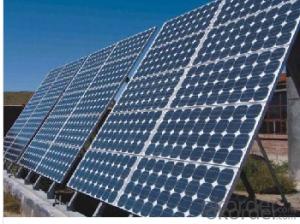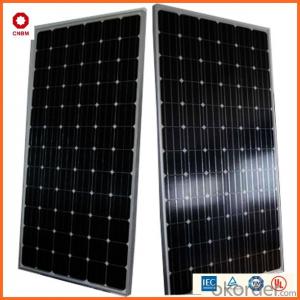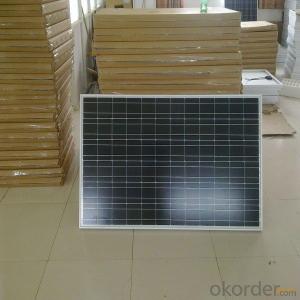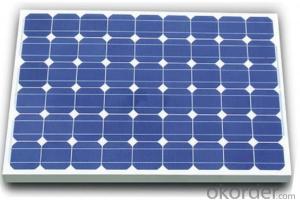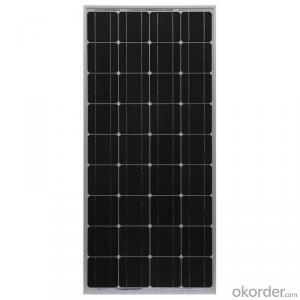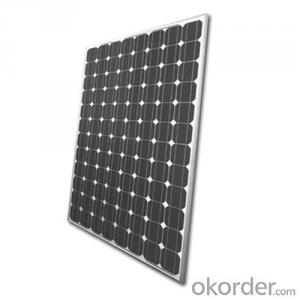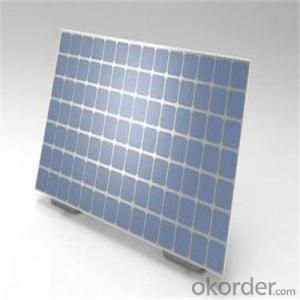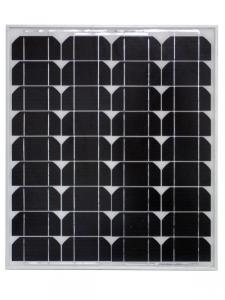Soft Solar Panels - Monocrystalline 150W Solar Panel Made in China
- Loading Port:
- Shanghai
- Payment Terms:
- TT OR LC
- Min Order Qty:
- 10000 watt
- Supply Capability:
- 1000000 watt/month
OKorder Service Pledge
OKorder Financial Service
You Might Also Like
Specification
Product Description
High efficiency monocrystalline 150w solar panel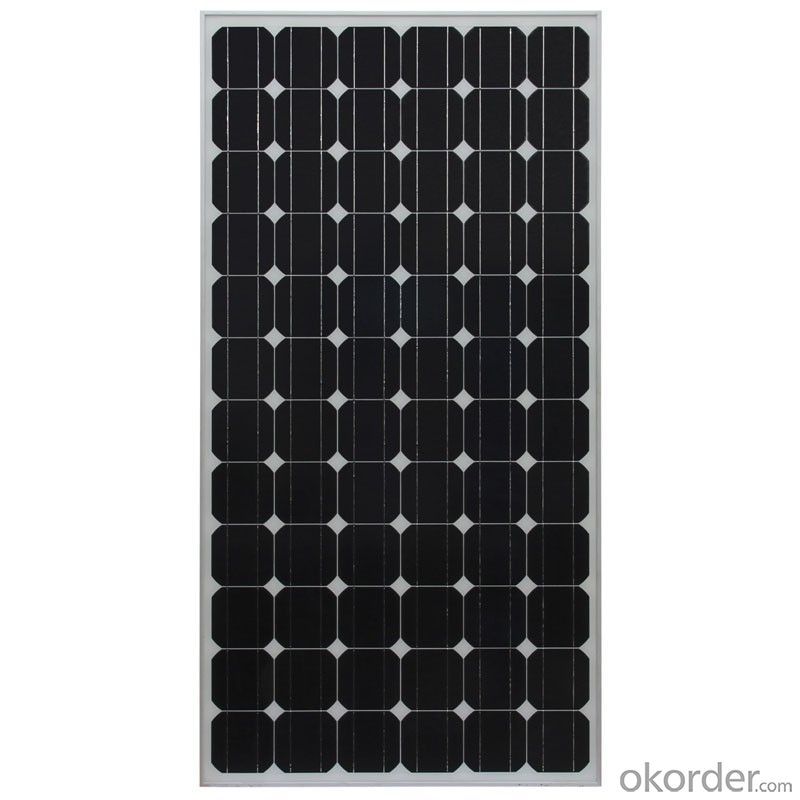
Electrical Characteristics
| Optimum Operating Voltage (Vmp) | 18V |
| Optimum Operating Current (Imp) | 7.6A |
| Open Circuit Voltage (Voc) | 22V |
| Short Circuit Current (Isc) | 8.34A |
| Module Efficiency | >=18% |
| Operating Module Temperature | -40 ºC ~+85 ºC |
| Maximum System Voltage | 1000V |
| Power Tolerance 0/+5 W | +/-3% |
Mechanical Characteristics
| Solar Cell | Monocrystalline |
| No. of Cells | 36(4*9) |
| Dimensions | 1480*680*35mm |
| Weight | 12kgs |
| Front Glass | 3.2mm high transmission, Low Iron, Tempered Glass |
| Frame | Anodized aluminium alloy |
| Junction Box | 4mm2, length 1000MM,TUV |
Temperature Characteristics
| Temperature Coefficient of Pmax | -0.47/ °C |
| Temperature Coefficient of Voc | -0.38/ °C |
| Temperature Coefficient of Isc | + 0.1/ °C |
Warranty
| 12-year product warranty |
| 25-year linear performance |
Packaging
2pcs/carton, 380pcs/20GP or custom
Features:
1. This monocrystalline 36-cell 150w solar panel has a high performance efficiency up to 18%.
2. Long Service Life can reach more than 25 years under maintenance according to stipulation.
3. Reliable quality leads to a better sustainability even in harsh environment like desert,farm and coastline
4. High Transmission, Low Iron Tempered Glass adopted.
5. Advanced Cell Encapsulation.
6. Yunkai modules are proven for the reliability and superior field performance due to high-standard raw materials used, stringent quality control process and advanced manufacturing technologies.
Application:
1. Solar power station, field operation some huge engineer construction;
2. Living house and home building;
3. Office building, factory and warehouse;
4. other industrial and commercial applications.
- Q: Got a quote for about $K today for solar panels to save me about $00 a month on my electric bill. I was just wondering if anyone had successfully bought and installed their own and how it worked for you?
- If you're in San Francisco, then the price of labor is going to be high. It's still legal to install your own, but you'll need to pull a permit, and get an inspection. If you hunt around on the PGE website, they'll guide you as to requirements. Aside from a standing-seam metal roof, the easiest install would be over asphalt shingle. As with any roof penetration, flashing and sealing the holes is critical.
- Q: what is one benifit in a solar panel?
- Solar panels enable use of sunlight for energy. Sunlight is a renewable resource, which means it won't run out, unlike coal and uranium (nuclear energy) and so forth. So there you go! It secures electricity for us for as long as the sun is there... which will be billions of years
- Q: Pretty much, can solar panel's support the entire houses electrical needs generally, because I know sometimes the owner's can sell unused electricity back, any ideas or any ideas on how much the average home uses in kWh
- Solar okorder
- Q: Ok so i have to solar panels to charge a battery however the panels hooked up in series does charge the battery very slowly because series connections only multiplies the voltage but leaves the current the same. Is there a way i can also hook both of them up in parallel at the same time to multiply the current for faster charge? I know i can do this with 4 panels but i dont want to spend extra. So is there a way to hook up 2 solar panels in series and parallel at the same time? Thanks in advace
- No. Series means one thing, parallel another, and they are mutually exclusive.
- Q: i want to build a stationary model of a solar panel and i dont know if it is going to be too simple or not i also want ideas to make it betterplease criticism is allowedmy idea was to make a case, just like a real solar panel, and take plexiglass to make it. i want to add some models of photovoltaic cells that look like they are in a solar panel . i want to add the fake shoulderings as well . i want to make the case openable by hinges.i would like some of your thoughts and ideas to help me .thx
- Build okorder /
- Q: Solar panels single crystal and double crystal in the rain which is easy to use
- At present, monocrystalline silicon solar cell photoelectric conversion efficiency of about 15%, the highest reached 24%, which is all types of solar cells in the photoelectric conversion efficiency of the highest, but the production cost is so large that it can not be a large number of extensive And commonly used. Since monocrystalline silicon is typically coated with tempered glass and waterproof resin, it is rugged and durable for up to 15 years and up to 25 years.
- Q: Can solar panels be installed on a mobile home?
- Yes, solar panels can be installed on a mobile home. In fact, mobile homes are well-suited for solar installations due to their compact size and portability. Installing solar panels can provide mobile homeowners with an eco-friendly and cost-effective alternative to traditional energy sources.
- Q: How do solar panels affect the roof warranty?
- Solar panels generally do not void a roof warranty, but they may have some impact on it. The installation process of solar panels involves drilling holes in the roof, which can potentially cause leaks if not done properly. Therefore, it is important to hire a reputable installer who is experienced in working with solar panels and understands the intricacies of a roof. Some roofing manufacturers may require specific mounting systems to be used, and failure to comply with these requirements may void the warranty. It is advisable to consult with both the solar installer and the roofing manufacturer to understand any potential impact on the roof warranty before installing solar panels.
- Q: I am doing a school project and we need to find the cost of solar panels for our school. The problem is i don't know what size the system needs to be. Is it 000 watts or 000000 watts?Also can you find the cost of the system?Thanks
- Take a look at the website from Retscreen International. This is a site sponsored by the Canadian government and they have everything that you will ever need to know about renewable energy. Download the free software and then feed in the position of your school (GPS Coordinates) and some data about energy useage. It will then link to the NASA websites to tell you the weather and work out what size of solar panel you need, what direction it should point and what angle it needs to be mounted on. I've used it for the UK, Afghanistan, Iraq, Jordan and other countries - It's brilliant - and its free. It also links to manufacturers websites and so gives you costings. Use this and you are guaranteed to be top of the class
- Q: Can solar panels be used to power swimming pools or hot tubs?
- Yes, solar panels can be used to power swimming pools or hot tubs. Solar panels capture sunlight and convert it into electricity, which can then be used to power various devices including pool pumps and heaters. This is an eco-friendly and cost-effective way to maintain the desired temperature in a swimming pool or hot tub.
Send your message to us
Soft Solar Panels - Monocrystalline 150W Solar Panel Made in China
- Loading Port:
- Shanghai
- Payment Terms:
- TT OR LC
- Min Order Qty:
- 10000 watt
- Supply Capability:
- 1000000 watt/month
OKorder Service Pledge
OKorder Financial Service
Similar products
Hot products
Hot Searches
